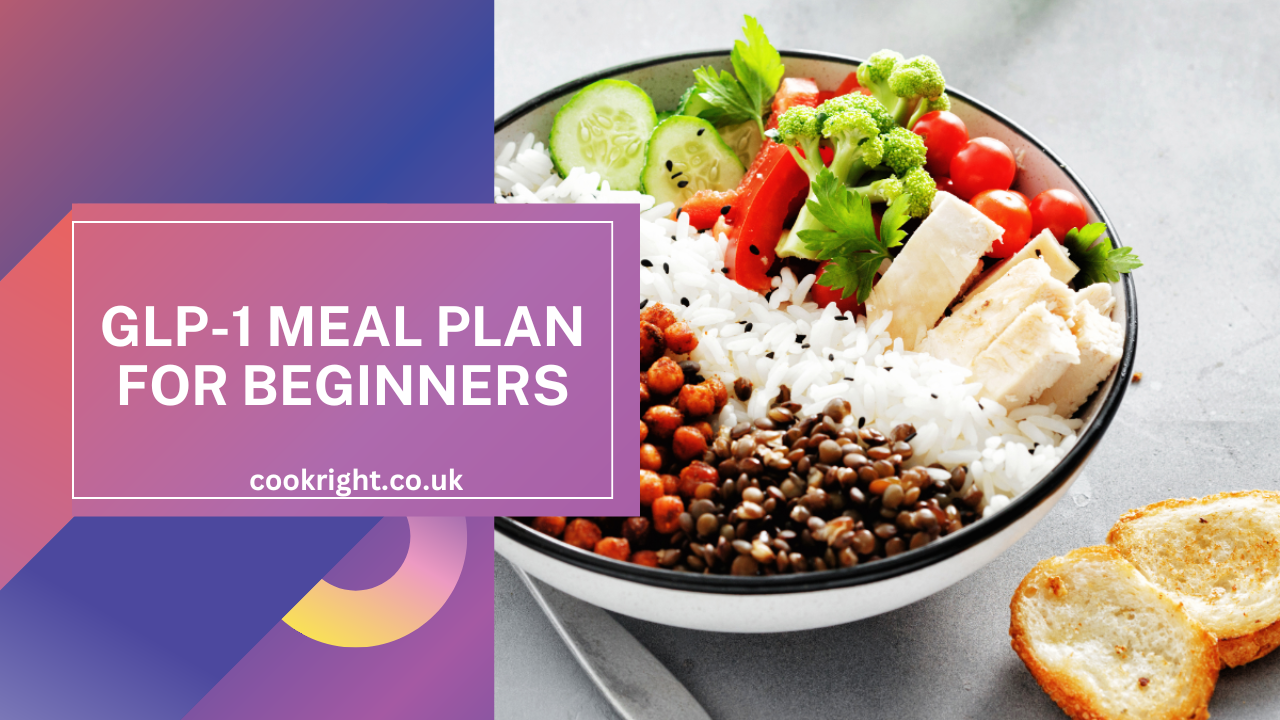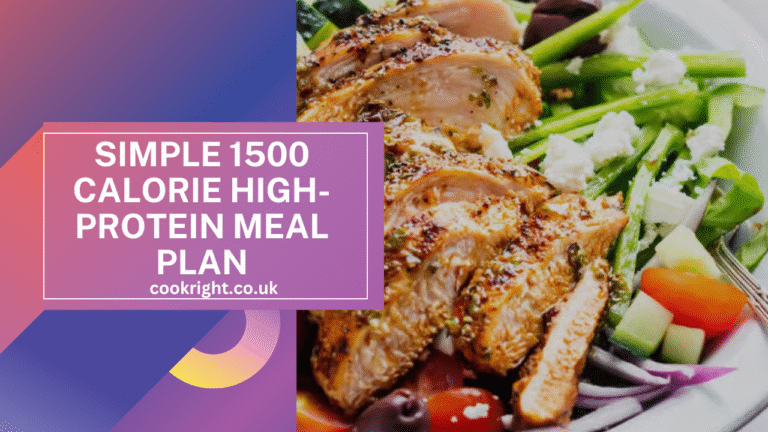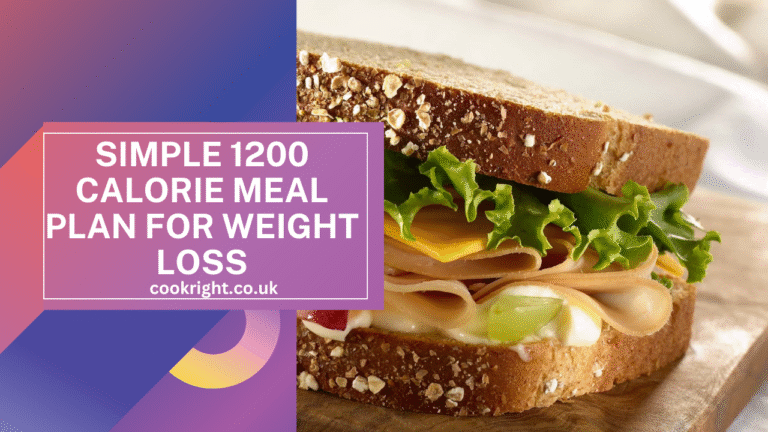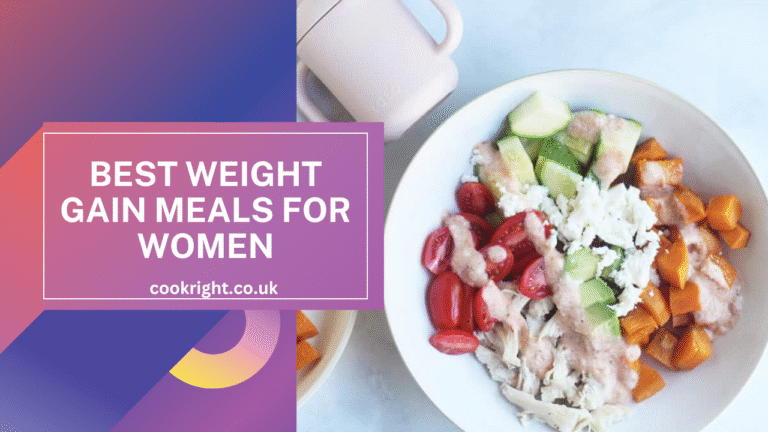Let’s talk about food — not just any food, but food that works with your body, not against it.
Over the past year, GLP-1 receptor agonists like Ozempic, Wegovy, and Mounjaro have become more than buzzwords — they’re now powerful tools in the fight against obesity and type 2 diabetes. But here’s the secret no one’s really talking about: what you eat while on these medications can make or break your experience.
As a food blogger who has always believed in the magic of mindful eating, I find the science of GLP-1 medications fascinating. They work by mimicking a hormone called glucagon-like peptide-1 (GLP-1), which slows gastric emptying, regulates insulin, and — here’s the fun part — makes you feel full faster. But when your appetite drops, it’s crucial that every bite counts.
So, let’s dive deep into how to build a balanced, delicious, and sustainable GLP-1 meal plan — one that nourishes your body, satisfies your cravings, and complements your medication’s effects.
The GLP-1 Mindset: Less Is More, But Better Is Best
Before we start mapping out meals, it’s important to understand the GLP-1 mindset. On these medications, you’re not going to be as hungry. That means:
- You’ll eat smaller portions
- You might feel full after just a few bites
- Your tolerance for greasy, sugary, or highly processed foods will likely drop
This isn’t a crash diet. It’s a metabolic reset. You’re re-learning how to eat with purpose and awareness. And the key? Quality over quantity.
Building Your GLP-1 Friendly Plate
Here’s how to make every forkful count:
Lean Proteins First
Protein is your best friend on GLP-1 medications. It helps preserve lean muscle mass during weight loss, keeps you full longer, and supports energy. Great options include:
- Grilled chicken or turkey breast
- Tofu, tempeh, or edamame
- Salmon, tuna, or sardines (bonus: heart-healthy fats)
- Greek yogurt, cottage cheese, or eggs
Pro Tip: If you can tolerate food in the morning, break your fast with a protein-packed meal. It sets the tone for stable blood sugar all day.
Non-Starchy Veggies Are a Must
Not only do they pack fiber (which supports digestion and satiety), they also add volume and color to your meals without excess calories.
Some GLP-1-friendly favorites:
- Roasted broccoli, Brussels sprouts, or cauliflower
- Sautéed spinach or kale with garlic and olive oil
- Crisp cucumber, bell pepper, and tomato salads
Pro Tip: If you’re experiencing nausea, stick to cooked vegetables instead of raw ones — they’re gentler on your stomach.
Healthy Fats Keep It Satisfying
With smaller meals, healthy fats become an essential source of satiety and flavor. They also support hormone health and help you absorb fat-soluble vitamins like A, D, E, and K.
Some good choices:
- Avocados or avocado oil
- Olive oil or olives
- Nuts and seeds
- Fatty fish like salmon or mackerel
Pro Tip: A small drizzle of olive oil or a spoonful of nut butter can make a big difference in how full and satisfied you feel after a meal.
Slow-Burning Carbs (Yes, You Can Still Have Carbs)
While your carb intake may naturally decrease, it doesn’t mean you need to avoid them completely. The trick is choosing the right kind — ones that are high in fiber and low on the glycemic index.
Smart carb options include:
- Quinoa, brown rice, or farro
- Sweet potatoes or butternut squash
- Steel-cut oats
- Lentils or black beans
Pro Tip: Pair your carbs with protein and fat to prevent blood sugar spikes and crashes.
What a Typical Day on a GLP-1 Meal Plan Looks Like
Here’s a sample day to give you a feel for how it might look in real life:
Breakfast
- 2 scrambled eggs with spinach and feta
- Half an avocado
- A few slices of cucumber
Mid-Morning (if hungry)
- A small serving of Greek yogurt with chia seeds
Lunch
- Grilled salmon on a bed of arugula, cherry tomatoes, and roasted sweet potato cubes
- Drizzle of olive oil and lemon
Afternoon Snack
- A handful of almonds or a boiled egg
Dinner
- Chicken stir-fry with broccoli, bell peppers, and a small portion of brown rice
- Ginger soy glaze (low sugar)
Evening (if needed)
- Herbal tea and a slice of apple with peanut butter
Foods to Be Careful With on GLP-1 Meds
Everyone reacts differently, but some foods tend to be poorly tolerated on these medications:
- Fried and greasy foods
- Sugary desserts and soda
- High-fat dairy (like heavy cream or full-fat cheese)
- Overly spicy or acidic foods (especially if you experience nausea)
Keep a food journal if needed — it can help identify personal triggers.
Tips for Eating Mindfully on GLP-1
- Chew thoroughly. Slower eating gives your stomach time to send those “I’m full” signals.
- Use smaller plates. Portion control becomes second nature.
- Don’t force meals. Listen to your hunger cues. If you’re not hungry, a light snack might be all you need.
- Hydrate often. Sometimes thirst masks itself as hunger. Aim for at least 8 glasses of water a day.
- Nourish, don’t deprive. This journey isn’t about eating less — it’s about eating better.
Final Thoughts: Make It Yours
A GLP-1 meal plan isn’t one-size-fits-all. The beauty of this journey is that you get to rebuild your relationship with food, one bite at a time. Whether you’re here to lose weight, manage your blood sugar, or just feel more in control, what you eat matters — not just for your body, but for your quality of life.
As someone who lives and breathes food, I’ll tell you this: there is still joy in eating. Even when you’re eating less, you can eat beautifully.
If you’re on a GLP-1 medication or considering it, remember: this is not a diet. It’s a new beginning.




